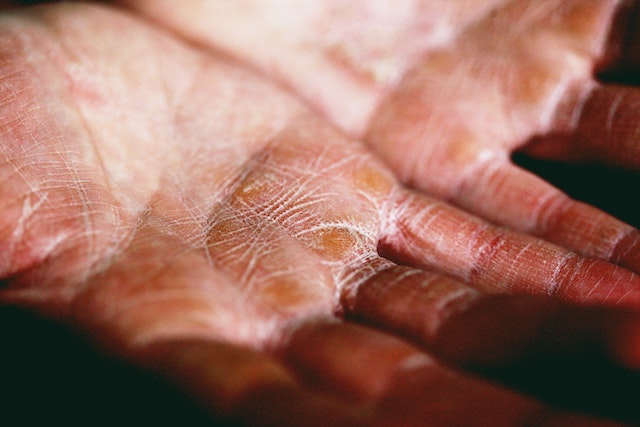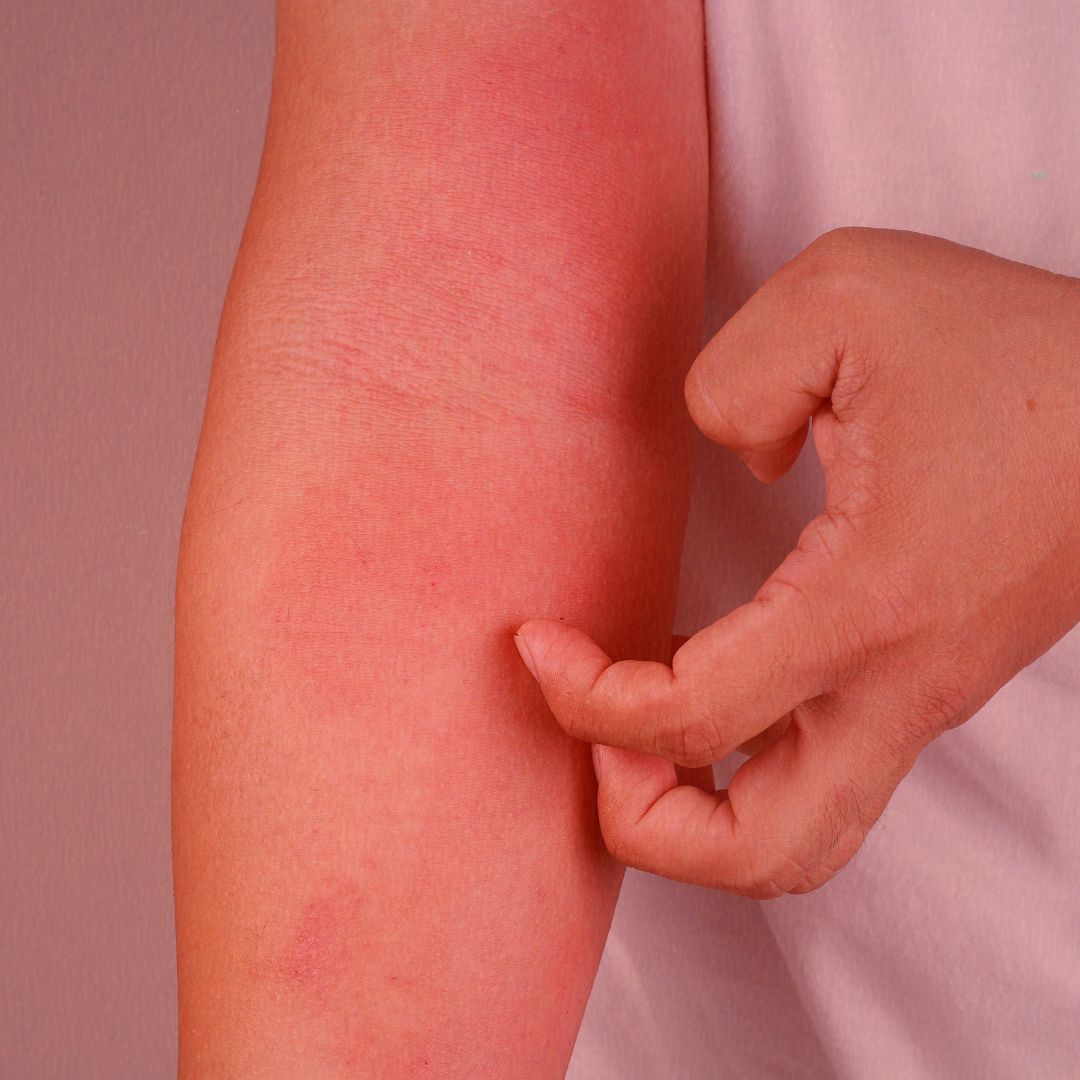How Does Red Light Therapy Help With Eczema? Does red light therapy actually treat eczema? Red light therapy is an effective, natural treatment for eczema and psoriasis, reducing itchiness and inflammation and helping speed the skin’s healing process in general. Additionally, natural red light therapy is safe and natural.
However, there are some factors to consider when using this type of therapy to treat your eczema or psoriasis.
This article will help you understand how red light therapy helps reduce symptoms of eczema and psoriasis, so you can decide if it’s the right treatment for you.
How Red Light Therapy Works
There is evidence that light therapy can have various effects on cells and tissues, including affecting metabolism and collagen production.
Wavelengths of light between 600 to 1000 nanometers have similar effects as long-wave ultraviolet rays without causing skin damage.
This type of therapy is called non-coherent, low-level laser therapy (LLLT). Light therapy helps to reduce inflammation by increasing blood flow to an area while healing and reducing pain.
Some practitioners suggest red infrared light might be useful for treating common skin problems because it stimulates collagen production and rejuvenates skin cells.
Related Content:
What Is Red Light Therapy: 6 Amazon At-Home Red Light Devices
What Causes Psoriasis and Eczema
Psoriasis and eczema are skin conditions that correlate to numerous internal health problems.
Psoriasis is an autoimmune disease that causes your skin cells to grow faster than usual. The skin cells begin to pile on top of the skin, which forms a white scale.
Eczema occurs due to genetics, stress, a weak immune system, and environmental elements causing inflammation.
Additionally, a poor diet, lack of vitamin D, stress, anxiety, and too much alcohol or caffeine can all contribute to the severity of psoriasis and eczema. Addressing these issues in their earliest stages can often result in clear, healthy skin.
Adding red light therapy to your weekly routine can help you manage stress levels, reduce symptoms, and improve overall health.
Does Red Light Therapy Help With Eczema?

If you’re suffering from psoriasis or eczema, chances are you have tried multiple remedies to reduce symptoms.
But does natural red light therapy work for these conditions? The answer to that question is yes!
Natural red light therapy helps reduce inflammation and swelling in affected areas, but it goes beyond just those two benefits.
It also reduces itchiness – one of the most frustrating symptoms of skin diseases like eczema and psoriasis.
A recent study followed 81 patients for a year, tracking the progression of their symptoms.
Researchers examined eczema rashes before, during, and after red light therapy treatments. After only one 2-minute session per week, results showed significant reductions in the following eczema symptoms:
- Follicular keratosis
- Dry flaking skin
- Redness
- Small bumps or swellings
- Pain and swelling
- Skin lesions
The research also discovered that phototherapy for skin conditions like eczema and psoriasis showed that patients who underwent the treatment had fewer patches and were less likely to pick at the skin.
And even better, there are no known side effects associated with using red light therapy units—it’s completely safe.
That said, if you want to get rid of your eczema or psoriasis, it may take more than just using a red light therapy unit at home.
It may be necessary to use prescription medication (topical creams) and red light therapy to get the best results.
How to Treat Eczema Naturally Using Red Light
You can use red light therapy as a powerful ally in fighting eczema naturally. While it won’t cure eczema or psoriasis, red light treatments will help relieve symptoms and speed up your body’s natural healing process.
For example, applying red light to affected areas can suppress itching and even help reduce flare-ups or lesions when you have eczema. In light therapy, skin inflammation decreases, and skin cell production slows down tremendously.
Red light therapy also accelerates wound healing by improving circulation and stimulating fibroblast cells to produce an extracellular matrix, which helps form connective tissue that supports skin cells.
Because of these benefits, red light therapy is an effective treatment for other conditions like acne and rosacea.
Tips For Treating At Home
When treating at home, remember that in most cases (not all), doctors will not suggest red light therapy to patients. Instead, they’ll recommend more traditional treatments such as corticosteroids and topical ointments.
This is why it’s essential to speak with your doctor before implementing any sort of treatment—including natural alternatives like red light therapy.
If you are using a device for home use, always follow manufacturer instructions carefully and use caution when using near children or pets.
In addition, it is always advisable to consult a dermatologist before beginning any new treatment plan for skin conditions.
If you have questions about using red light therapy for eczema or psoriasis, we recommend consulting an expert who can help guide you through your options.
Final Thoughts: Red Light Therapy Is An Effective Tool To Reduce Eczema & Psoriasis Symptoms
Eczema and psoriasis can be effectively treated with red light therapy, which reduces itching and inflammation. It is a safe remedy that can also help speed the skin’s healing process in general. Therefore, red light therapy is an effective, non-invasive alternative to medications or procedures.
Are you considering red light therapy to treat your eczema and psoriasis? Please share your experience below!
